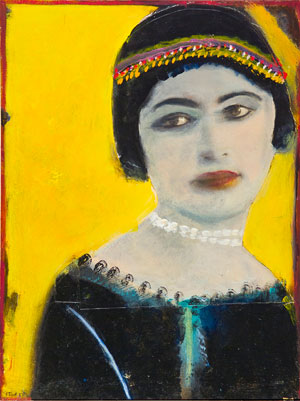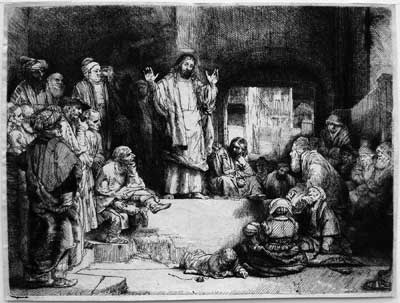State Of The Arts: Sinking With The Economy
Jan. 21-25, the new venue made little difference to art sales that seem
to be dropping to low, if not completely devastating, levels. All the
same, the lack of sales has not discouraged artists from creating new
works and vendors from exhibiting them.
"The reality is that
people need to have homes to live in and food to eat, and we have
challenges," said gallery owner Jack Rutberg(cq), an exhibitor at the show.
Rutberg
acknowledged that art sales would take a hit despite a $50 million
proviso for the National Endowment for the Arts under the current
stimulus package. The package would foment production in the arts, but
sales are far from predictable.
On the third day of the show,
Lisa Schiller, of Schiller & Bodo said her gallery had not sold
anything.
"We are definitely affected by this economy in that
no matter what it is, people are hesitant to spend money now because
they don't know what the future holds."

The five-day show was
the Fine Art Dealers Association's largest
show yet. Exhibitors paid thousands of dollars to rent booths and
compete with two other art shows;
one that even took place during the same weekend.
The show went
on to feature more than 15,000 works from 135 galleries and looked like
a cubicle-filled museum with everything actually on sale.
But the show's size did little to produce sales.
"For
fairs like this it's about people who've got a lot of money to go
shopping," said Jean Frater, a Chicago artist who visited the show
with her family. "I don't know how much money people have, so [the
exhibitors] probably aren't going to do as well as they did before."
Some
people, however, ascribe that potential failure to sell not to
stinginess or reluctance or to a poor economy, but to a more internal
glitch.
Exhibitor Eli Klein, whose gallery features
prominent Chinese artists, attributed other galleries' poor sales to
mismanagement rather than to the economy. Klein sold four pieces
totaling $150,000 in his first few days at the fair and is optimistic
about weathering the storm.
"Like everything these days, things are going slightly downhill," he said.
But he also explained the problem doesn't have to hinder the art world for long--or him at all.
"To
be honest," he continued. "We've been doing
phenomenally, better than ever, so I would certainly think in the next
few years, on a personal level, my gallery will continue to thrive."
Even
if the global economy is suffering, and vendors sold little product,
enthusiastic exhibitors from as far as Korea and Spain made their way
to the Convention Center. They showed pieces produced in the last year;
some were produced as early as the 1600s.

Sprinkled throughout
the Convention West Hall--among installations and prints--were
sculptures colored with shards of broken mirrors and paintings that
looked like photographs. Political pieces, like a neon portrait of
former President George W. Bush's face that read "Vote Obama" beneath
it, set the tone for its exhibit. Other works included Rembrandt van
Rijn's
etchings, contemporary adaptations of Velázquez and Bosch's
classics and
this year's MFA outcrop in the show's Supersonic 2009 exhibition.
For those worried
about investing in the stock market, the show offered panels discussing
how to invest in art as an alternative asset and how collectors can
preserve a work's value when passing it on to their children.
Artists
and experts discussed the state of the arts in the new political
landscape. President Obama's call for an artist corporation and more
funding for the National Endowment for the Arts gained him popularity
in the art world, but his promises had to be put on hold in light of
economic challenges.
Radio
host Mat Gleason, a speaker at one of the
show's lectures, said he was eager to see a divergence from the
"corporatization and commercialization" that have shaped the art world
since the 1990s into an artist brand name and career industry. He said
he believes the hard times will bring an end to "the career era of the
arts," a time when "artists were too busy chasing their careers [to
make] art."
But the show proved that art is still being made and sold, even if the economy is hurting.
"We're
in a recession, but, so what?" said Leo Dexter, an artist agent.
"Actually it means that art becomes increasingly important for people
in a recession because if you can divert yourself, brighten your
surroundings, so much the better."



